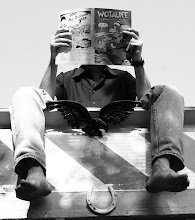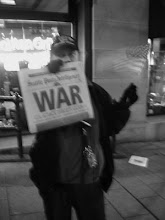
PAGE ONE
FIRST PANEL: Peter Porker is eating lunch at his desk when J. Jonah Jawsome rushes out of his office, holding a phone.
Jawsome: “Porker! Grab your camera and get down to fourth and Herriman! They’re about to parade the fattest living woman in Swineville – Gorgeous Edacity Binge!”
Porker: “But, JJJ, I’m still eating my lunch!”
SECOND PANEL: Jawsome takes Peter’s lunch and eats it himself. Peter looks glum.
Jawsome: “Now you’re finished! Get going – if you want to see another paycheck!”
This is how, in early January, 1988, at the ripe age of twenty three, I began what was to be my first, and last, scripting assignment for Marvel Comics.
Having been offered the writing reigns of a particular red and blue, web-slinging, wise-cracking superhero, I promptly proceeded to offend, bewilder, dismay, and otherwise utterly confuse my editor, so much so he refused to even speak to me, instead putting his assistant on the phone to read me the riot act, while I sputtered explanations, desperately trying to justifying my cause, having less effect than a brine shrimp arguing before the maw of a hungry whale.
My crime? I had tampered with the sacred structure of one of America’s preeminent publishing empires, an ignoble gesture, I was told, which had sullied the intricate groundwork laid before me by generations of hard-working writers.
Entrusted with the narrative care of a treasured commercial property, I had quickly set to all but eradicating its every recognizable trait. It was as if, having been asked to write a James Bond novel, I’d instead turned in a manuscript concerning a ninety five year-old Englishman who spares the world imminent destruction by accidentally spilling his cup of tea. Though, in my defense, it needs to be noted that the “cherished” character I had been asked to chaperone into new respectability was a pig.
That’s right, a super-powered, masked pig.
To those of you not currently residing in your parent’s basement, the title Peter Porker, the Spectacular Spider-Ham will mean very little. To those of you who are, it will also probably mean very little. Spider-Ham was Marvel’s “funny animal” parody of their popular Spider-Man character. Initially part of their Star Comics imprint, a clumsy attempt at cornering the massive market for children’s comics held by Harvey Publications and Archie Comics (I’m being sarcastic here), Spider-Ham endured seventeen issues of his own bi-monthly title, before being cancelled and relegated to a five-page back-up feature in Marvel Tales, a repository for reprinted Spider-Man stories.
Which is where my genius came in.
Having sent a sample script to Marvel editor Jim Salicrup, one featuring my own character, Buster Crook, a one-eyed, long-haired dwarf adventurer/crime fighter who traveled the globe in a car shaped like a cow, I’d received a fairly prompt reply, one making an offer I’d not bargained for. Salicrup, not seeing much commercial potential in my Buster Crook premise (just why I can’t fathom), nevertheless spotted something in my “imagination and inventive sense of humor”, enough to suggest I might be the one to help reinvigorate Spider-Ham, who was by then spoiling away in the back pages of Marvel Tales. He explained that “the character has never been handled well and I’ve been searching for someone to give the strip an identity of its own, to make it more than a funny animal version of Spider-Man. It would be great if it could be funny too.”
I suppose being tossed such a wastrel of the Marvel Universe, a pig dressed as a man bitten by a spider, was an appropriate trial for an untested rookie, much like batting for a junior farm league team somewhere in central Ohio, but I couldn’t help feeling just a little bit “utilized”. I was, after all, a writer, a writer of uncommon good taste, a writer with ideals to meet, lofty principles to honor. The funny animal genre was a mongrel I’d hardly even raise a foot to, especially the sort of thing that was then passing for the form; sour, leaden, four-color tragedies like Spider-Ham and Captain Carrot and his Amazing Zoo Crew!, titles whose humor hinged upon animal-related puns so horrible entire species were regularly taking offense. I aspired to something a bit higher on the ladder of respectability, even if it had to involve animals wearing pants.
“You changed J. Jonah Jackal’s name to Jawsome,” declared the indignant assistant.
“Well, right, that’s because he’s not a jackal any more,” I replied.
“He’s not a jackal any more? Then what is he?”
“He’s a pig.”
“You changed Mary Jane Waterbuffalo to Mary Jane Majestic.”
“Right.”
“She’s a pig too?”
“Everyone’s a pig – that’s my big change.”
“You can’t just make everyone a pig! What about continuity?”
Taking Salicrup’s plea for something more than a funny animal parody to heart, I had set out to craft a ten-page story that would forever imprint upon the collective comics-reading consciousness a character so unique, so unexpected, so utterly unheralded it would make even the collected works of Alan Moore seem mundane by comparison. Happily digging through my sizable morgue of reference and inspiration, I had built a template for a new spider-powered pig product, framing it with the time-tested conceit of one of my very favorite cartoonists, Carl Barks. As Barks had done so successfully with his stories featuring Donald Duck and Uncle Scrooge, I chose to simply ignore the beastial appearance of my character, thus eliminating the whole premise of Spider-Ham even being a funny animal comic. If making it more than a funny animal parody was desired, I had reasoned, then why not make it something altogether beyond one?
To accomplish this ritualistic “de-swining” I followed Bark’s lead, but took it to its logical conclusion, making all of Peter Porker’s friends and relatives members of the order sus scrofa. I quickly saw to it that there were no supporting characters of indeterminate origin like the Beagle Boys, who had always confused me. Were they, in fact, beagles? If so, how could one help but conclude that all of Bark’s similar-looking characters were canine also, setting up a reality with a bizarre, two-pronged zoology, a world of dogs and water fowl only?
“You changed Star City to Swineville?”
“Yes. It’s a city full of pigs now. I thought it would be a funny name.”
“You turned The Daily Beagle into The Daily Testimony.”
“Right. Beagle seemed wrong for pigs.”
“Why – why did you think you could just do all of this?”
“Uh, well, you asked me to make Spider-Ham different, and better, so I did.”
Wanting to give the series an edgy milieu (a late 80s comic book phrase if there ever was one), I’d quickly decided to tweak my initial premise, allowing for a literal allusion to my character’s piggish appearance, creating a bogeyman or, more succinctly, death, an oft-alluded-to (but never seen) “butcher”, a grim reaper who would, when one’s time was up, offer you a one-way “ticket to Chicago”, referring to that city’s noted history in the slaughterhouse trade. I soon had grand ideas of making Swineville a city-sized metaphor for the meat industry, making each day, and night, an exercise in surviving the inevitability of that ride to Chi-Town. I imagined rooftop soliloquies, a graven Spider-Ham casting his weary gaze out into a thunderous sky laced with lightning, my lavender prose evoking the sound of “butcher’s knives sharpening against stone”. But, after a few days tooling with this approach, I soon realized it would only appeal to comic book readers who were as religiously devout as I in their current vegetarianism. Which meant me, and a lonely, fifteen year-old girl living in Poughkeepsie.
So, I shifted tone once again, this time opting for a more, well, a more “Disney” approach. My mind racing for that something special that would set my treatment aside from all others, I though “why shouldn’t I treat Spider-Ham as if indeed it were the latest Barks-influenced Disney property?” Why not set it up to catch some of the attention that then-popular cartoons like Rescue Rangers and DuckTales were garnering? In other words, I wasn’t now just ignoring funny animal comics, I was altogether ignoring the general readership of funny animal comics. It was mutiny.
“But your sketches, in the layouts you made, they don’t even look like Spider-Ham!”
“Well, you know, the old Spider-Ham looked more like an aardvark – a lot like Cerebus the Aardvark, in fact.”
“I don’t agree.”
“I think kids will relate to a more traditional pig shape.”
“Kids?”
Well, isn’t that what Marvel, in all its infinite wisdom, was essentially reaching for with the Star Comics line? Of course, no right-thinking American boy or girl would be caught dead with an issue of Planet Terry or Royal Roy (forever Donald Trump to Richie Rich’s Bill Gates), but the “House of Ideas” seemed oblivious to this, thinking they could saturate a weak market with inane knock-offs and a web-spinning pig.
Working diligently for the next two weeks, positive I was onto a sure thing, I ended up with ten, finely-tuned pages of a script entitled “An Ample Infatuation”, a chummy, kid-proof little tale chronicling how Spider-Ham is snared into an “arranged” marriage with Gorgeous Edacity Binge, the fattest woman in all of Swineville. The story introduced three new regular characters, of my own design: J. Jonah Jawsome’s irritating nephew, Winchester, who only spoke three words: Pow! Pow! And Pow!, Morton C. Exposure, Peter Porker’s new adversary in the freelance photography biz, and last, but not least, Snappy, Peter’s sentient, talking camera. Clearly, this was an unimpeachable bit of classic comic book writing, a fully successful introduction to a vastly improved Spider-Ham, one which was funny, exciting, and cute – and most definitely not a parody.
Brimming with anticipation, convinced I would soon be writing regularly for Marvel, I prepared an elaborate package for Salicrup, going so far as to draw a complete panel-to-panel layout for every page, which I included with the typewritten text. Also, wanting to make my “Barksian” approach clear, I photocopied a variety of pages from Donald Duck stories, offering, about the margins, a running lecture on the virtues of Bark’s genius and just why I felt it would save Spider-Ham. Placing all of this in an envelope I’d decorated with cut-out photographs of real pigs, colored to look as if they were wearing the familiar red and blue costume of everyone’s favorite web-slinger, I hurried to the mailbox, imagining the glory that was soon to be mine.
“You changed almost everything.”
“Right.”
“You can’t do that. We wanted a different take on the characters we had.”
“Oh. Well, maybe mine’s just a really different take?”
“Sorry, this isn’t going to work.”
click
That was it, my audition was over. I had been extinguished. My star would never shine amidst that constellation of monthly and bi-monthly titles known as the Marvel Universe, never would I share a bench with all the comic book greats in the Mighty Marvel Bullpen. I did, however, a few months later, receive a partial script for something called West Coast Avengers, asking that I might try my hand at “making it work”. I didn’t even reply, having, by that time, exhausted my enthusiasm for writing anything close to a conventional super hero comic. I was already embarking on a journey to a real alternative universe, one where I could write, and draw, the sort of comics I wanted to, pigs and continuity be damned.

























































